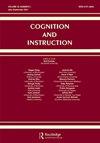重塑反应性挑战:一个框架锚定的解释框架来解释新手教师对学生思维的注意力和反应的不规则性
IF 2.6
1区 心理学
Q2 PSYCHOLOGY, EDUCATIONAL
引用次数: 14
摘要
摘要专注于教师教育的数学和科学教育研究人员强调,对学生思维的关注和反应是有效课堂实践的核心。对学生思维的反应包括关注学生思想的实质——学生正在创造的意义——并追求这种思维,根据需要调整教学流程。然而,对学生思维的关注和反应是不规律的,在新手教师中通常很少见。在这篇理论论文中,我们认为,注意力和对学生思维的反应的不规则性,包括个别教师实践中的可变性,可以用一个基于教师课堂活动本地化框架的框架来解释——他们对“这里发生了什么”的感觉。“通过对不同背景和时间尺度的课堂事件的分析来说明我们的主张,我们展示了框架锚定框架如何协调和改进新手教师对学生思维的注意力和反应不规律的三种常见解释:参与和反应的技能和/或知识不发达,关于学习的“传播主义”信念,以及制度约束(以及教师对其的看法)。基于这一论点,我们建议教师教育工作者可以将新手教师的课堂活动框架作为生成锚,在课堂环境中支持对学生思维的关注和反应。本文章由计算机程序翻译,如有差异,请以英文原文为准。
Reframing the Responsiveness Challenge: A Framing-Anchored Explanatory Framework to Account for Irregularity in Novice Teachers’ Attention and Responsiveness to Student Thinking
Abstract Mathematics and science education researchers focused on teacher education emphasize attention and responsiveness to student thinking as central to effective classroom practice. Being responsive to student thinking involves attending to the substance of students’ ideas—the meaning students are making—and pursuing that thinking, adjusting the flow of instruction as needed. Yet, attention and responsiveness to student thinking is irregular and generally rare among novice teachers. In this theoretical paper, we argue that the irregularity of attention and responsiveness to student thinking, including variability within individual teachers’ practice, can be explained by a framework grounded in teachers’ localized framings of their classroom activity—their sense of “what is it that’s going on here.” Using analyses of classroom episodes across contexts and timescales to illustrate our claims, we demonstrate how a framing-anchored framework can coordinate and improve upon three common explanations for the irregularity of novice teachers’ attention and responsiveness to student thinking: underdeveloped skills and/or knowledge for attending and responding, “transmissionist” beliefs about learning, and institutional constraints (and teachers’ perceptions thereof). Building on this argument, we suggest that teacher educators can work with novice teachers’ framings of their classroom activities as a generative anchor for supporting attention and responsiveness to student thinking in classroom settings.
求助全文
通过发布文献求助,成功后即可免费获取论文全文。
去求助
来源期刊

Cognition and Instruction
Multiple-
CiteScore
7.90
自引率
12.10%
发文量
22
期刊介绍:
Among education journals, Cognition and Instruction"s distinctive niche is rigorous study of foundational issues concerning the mental, socio-cultural, and mediational processes and conditions of learning and intellectual competence. For these purposes, both “cognition” and “instruction” must be interpreted broadly. The journal preferentially attends to the “how” of learning and intellectual practices. A balance of well-reasoned theory and careful and reflective empirical technique is typical.
 求助内容:
求助内容: 应助结果提醒方式:
应助结果提醒方式:


